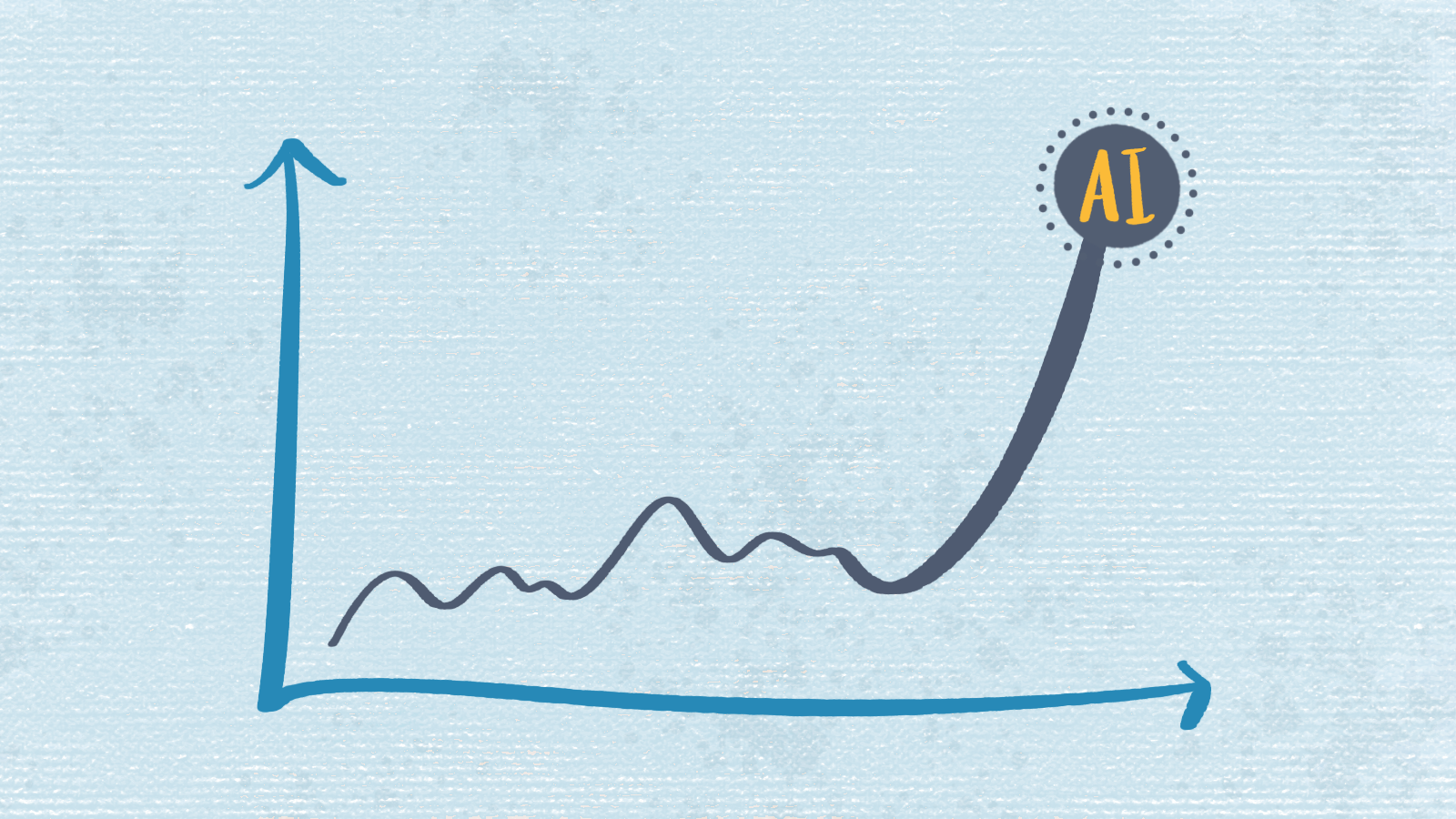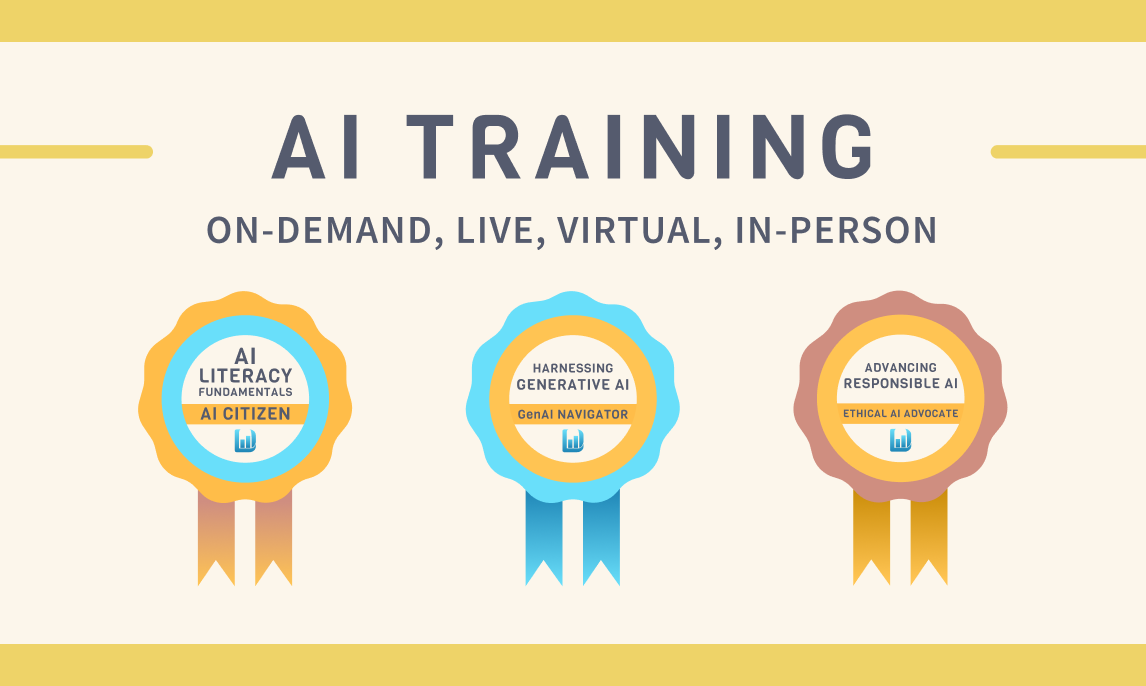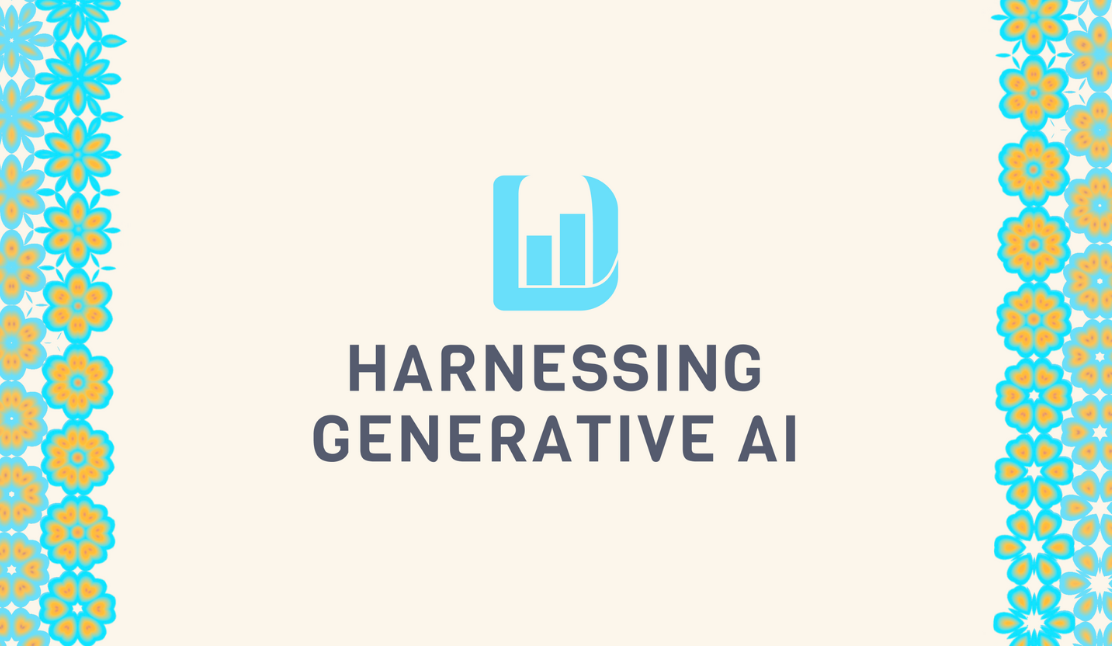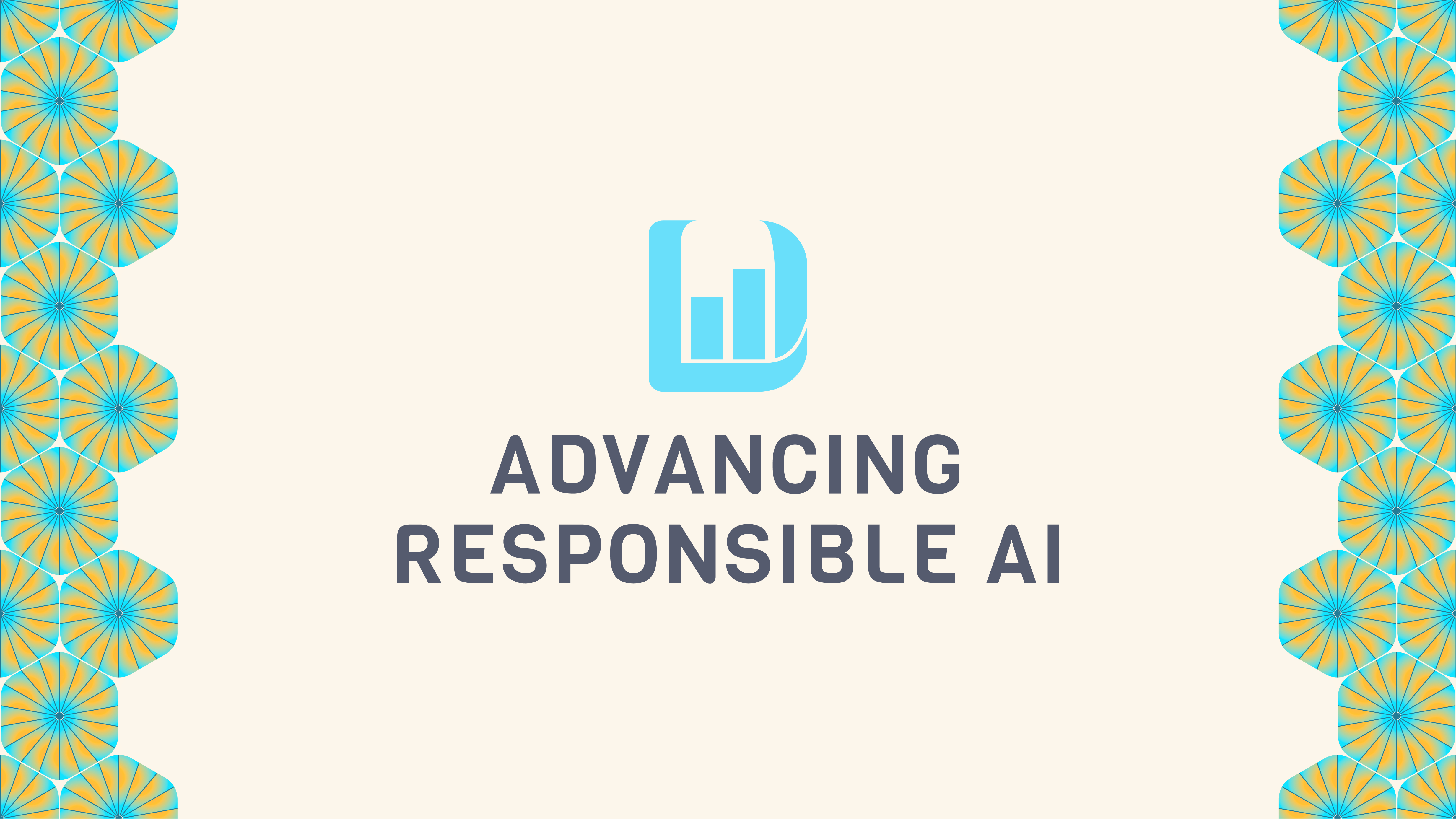AI Literacy: The #1 Fastest Growing Skill in 2025

By Ben Jones, Co-Founder and CEO of Data Literacy and author of AI Literacy Fundamentals
It’s official: AI Literacy has been named the #1 fastest-growing skill in the United States for 2025, according to LinkedIn’s inaugural “Skills on the Rise” report.
As someone who’s dedicated my career to helping professionals understand data and its many uses, this announcement is both a validation and a call to action. The digital transformation we’ve been discussing for years isn’t approaching—it’s here, reshaping the workforce and the world in ways that demand our thoughtful attention.
Why AI Literacy Tops the Charts
LinkedIn’s article and their Work Change Report state that “by 2030, 70% of the skills used in most jobs will change, with AI leading as a catalyst.” It’s not entirely clear how they arrived at this estimation—even their methodology section doesn’t really justify this claim. But it’s not too much of a stretch to imagine how the deployment of AI chatbots and copilots could have a far-reaching impact on knowledge workers in every industry.
What makes AI Literacy particularly notable is that it’s not just for technical roles. According to LinkedIn, both technical and non-technical professionals are adding AI skills to their profiles. Whether you’re a Software Engineer, Product Manager, or CEO, understanding how AI tools work—including their limitations and risks—is becoming essential.
It’s not too surprising that AI Literacy is the fastest-growing skill in job functions like information technology, consulting, and education. But it also topped the skills growth list for arts & design, customer success & support, media & comms, and even sales. As AI continues to transform workflows across disciplines and industries, professionals who can effectively navigate these tools, including knowing when NOT to use them, have a distinct advantage.
Myths and Misconceptions About AI
Yes, AI has a growing presence across most sectors, but pause for a moment: do you find yourself believing any of these common myths about it?
Myth 1: AI systems are objective and unbiased. Reality: AI systems reflect the data they’re trained on and can perpetuate or even amplify existing biases. We have to understand this before deploying any AI system.
Myth 2: AI will soon achieve human-level general intelligence. Reality: Current AI excels at specific tasks but lacks the comprehensive understanding and adaptability of human intelligence. The “artificial general intelligence” often portrayed in the media remains theoretical.
Myth 3: AI can be trusted to make important decisions autonomously. Reality: AI systems make statistical predictions, not reasoned judgments. They require human oversight, especially for consequential decisions affecting people’s lives.
Myth 4: AI will either save humanity or destroy it. Reality: The impact of AI isn’t predetermined—it depends on how we design, deploy, and govern these systems. Neither utopian nor dystopian extremes accurately represent AI’s realistic potential.
Myth 5: You need advanced technical skills to work with AI. Reality: While technical expertise is valuable for developing AI, working effectively with AI increasingly requires literacy rather than programming skills. It’s useful to understand general capabilities, limitations, and appropriate use cases.
Why This Matters for Your Career
We don’t need everyone mindlessly jumping on a technology bandwagon. Instead, focus on building specific, nuanced AI skills that will set you apart and keep you competitive in today’s fast-changing workplace. Here are three high-impact skills to develop:
- Evaluate AI outputs: Learn to critically assess AI-generated content for accuracy, bias, and relevance. Don’t just trust the output—verify it.
- Identify appropriate use cases: Spot where AI can truly add value in your work—automating repetitive tasks, surfacing insights, or accelerating decision-making—without over-relying on it.
- Mitigate risks: Recognize red flags like hallucinations, bias, or misuse, and take steps to avoid harmful or unethical outcomes.
How to Develop Your AI Literacy
Here at Data Literacy, we’ve spent years helping professionals navigate the evolving landscape of data and AI, and we’ve seen firsthand how customized, role-based training can transform confusion into confidence.
That’s why I’m highlighting our suite of AI literacy courses designed to help you develop a balanced perspective:
AI Literacy Fundamentals
For those beginning their AI journey, this foundational course provides clarity on core concepts, practical applications, and the impact of AI in our daily lives. You’ll cut through both the hype and fear surrounding AI to gain a balanced perspective on this critical topic.
This course helps you understand:
- The history and basic mechanics of AI systems
- How to distinguish between AI capabilities and limitations
- Common misconceptions about what AI can and cannot do
- The social and ethical implications of AI applications
Harnessing Generative AI
This comprehensive course helps you understand and effectively use generative AI technologies. You’ll explore both AI’s potential and its significant challenges while gaining practical skills for responsible application.
You’ll learn to:
- Define generative AI and recognize its technological boundaries
- Apply generative AI tools in appropriate scenarios
- Identify and address ethical concerns and biases
- Develop strategies for safe implementation, including knowing when not to use AI
Advancing Responsible AI
This course equips you with the knowledge and tools to ensure AI is ethically deployed in your organization. You’ll learn techniques to identify and eliminate bias, ensure transparency, protect privacy, and explore strategies for positive impact while avoiding harmful applications.
You’ll learn to:
- Identify and mitigate bias and ensure fairness in AI systems
- Grasp the value of transparent and explainable AI models
- Protect privacy and secure AI applications
- Develop governance frameworks for accountable AI deployment
- Create strategies for positive social and environmental impact
All three of our AI Literacy courses are available in two formats:
- On-Demand and Self-Paced: Learn at your own pace through six comprehensive lessons (2-3 hours total)
- On our online learning academy here at Data Literacy
- Imported into your own organization’s Learning Management System (LMS)
- Guided Team Learning: Engage your team with live, collaborative sessions led by expert instructor
- Virtual sessions via Zoom, MS Teams, or your own organization’s teleconferencing platform of choice
- In-person and onsite at your own organization’s offices
Balancing Opportunity with Responsibility
As LinkedIn’s report confirms, AI literacy isn’t just an optional technical skill—it’s becoming fundamental to professional success across industries. But true literacy means more than knowing how to use AI tools; it means understanding when they shouldn’t be used at all.
AI systems can perpetuate biases, generate misinformation, make critical errors in reasoning, and potentially intrude on privacy. Highly AI-literate professionals recognize these pitfalls and develop the judgment to determine when human expertise should take precedence over algorithmic efficiency.
The good news is that AI literacy isn’t about becoming a data scientist or programmer. It’s about developing critical thinking around these powerful but imperfect tools. It’s about knowing the right questions to ask, recognizing red flags, and identifying appropriate applications where AI can help you work more effectively—while avoiding applications where it might do harm.
Don’t just keep up with AI—develop the discernment to use it wisely. The time to build your AI literacy is now.
Ready to get started? Explore our AI literacy courses today and develop the balanced perspective needed to navigate this rapidly evolving landscape.
Understanding AI’s capabilities and limitations is the key to using it responsibly—let’s build that future together.





